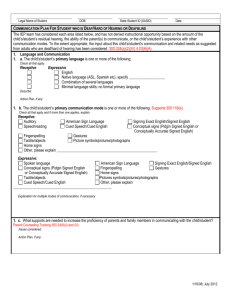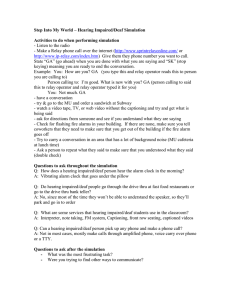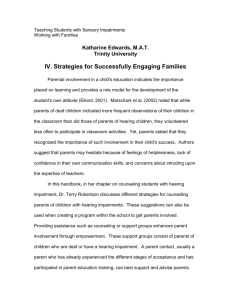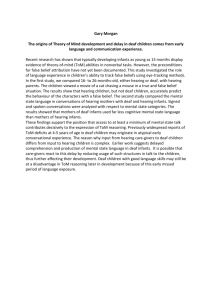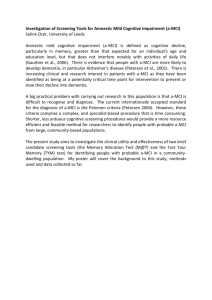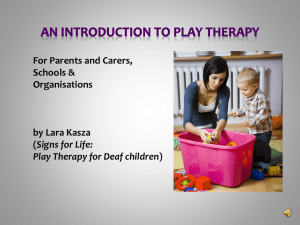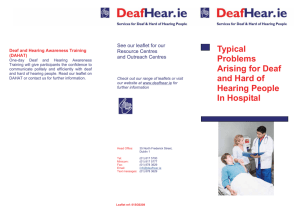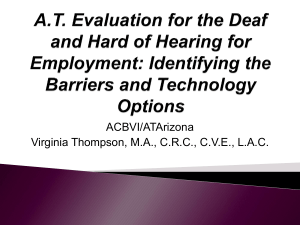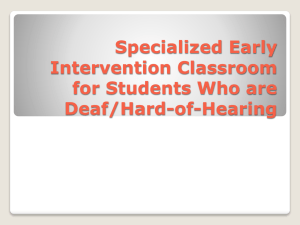Hearing Difficulties - Guidelines
advertisement
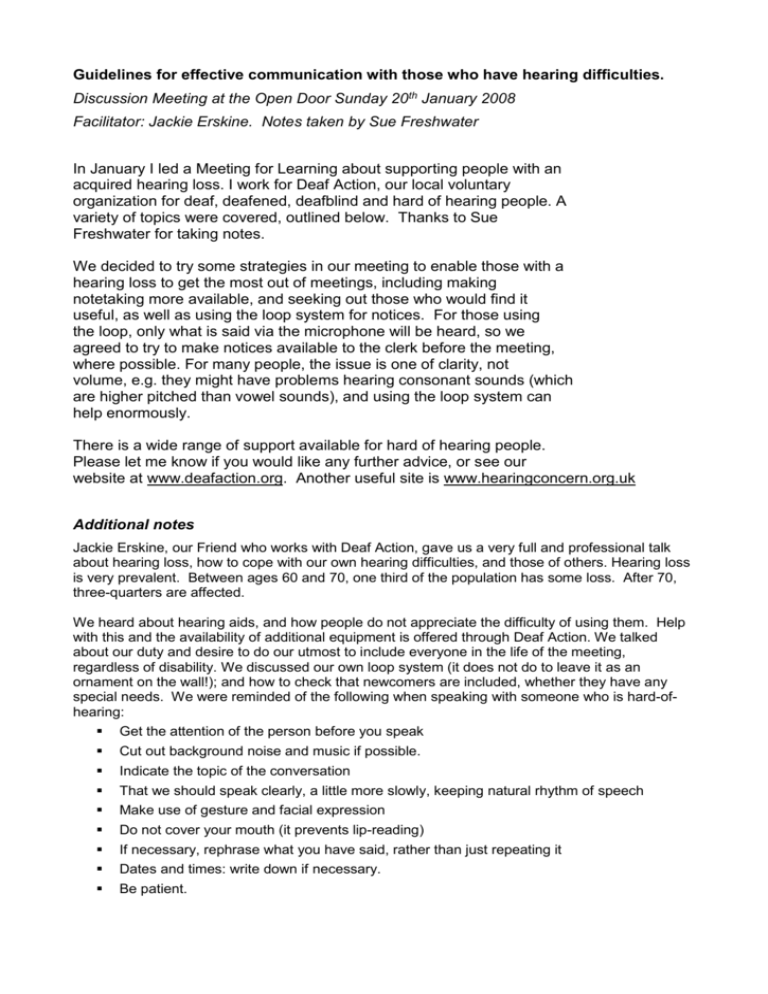
Guidelines for effective communication with those who have hearing difficulties. Discussion Meeting at the Open Door Sunday 20th January 2008 Facilitator: Jackie Erskine. Notes taken by Sue Freshwater In January I led a Meeting for Learning about supporting people with an acquired hearing loss. I work for Deaf Action, our local voluntary organization for deaf, deafened, deafblind and hard of hearing people. A variety of topics were covered, outlined below. Thanks to Sue Freshwater for taking notes. We decided to try some strategies in our meeting to enable those with a hearing loss to get the most out of meetings, including making notetaking more available, and seeking out those who would find it useful, as well as using the loop system for notices. For those using the loop, only what is said via the microphone will be heard, so we agreed to try to make notices available to the clerk before the meeting, where possible. For many people, the issue is one of clarity, not volume, e.g. they might have problems hearing consonant sounds (which are higher pitched than vowel sounds), and using the loop system can help enormously. There is a wide range of support available for hard of hearing people. Please let me know if you would like any further advice, or see our website at www.deafaction.org. Another useful site is www.hearingconcern.org.uk Additional notes Jackie Erskine, our Friend who works with Deaf Action, gave us a very full and professional talk about hearing loss, how to cope with our own hearing difficulties, and those of others. Hearing loss is very prevalent. Between ages 60 and 70, one third of the population has some loss. After 70, three-quarters are affected. We heard about hearing aids, and how people do not appreciate the difficulty of using them. Help with this and the availability of additional equipment is offered through Deaf Action. We talked about our duty and desire to do our utmost to include everyone in the life of the meeting, regardless of disability. We discussed our own loop system (it does not do to leave it as an ornament on the wall!); and how to check that newcomers are included, whether they have any special needs. We were reminded of the following when speaking with someone who is hard-ofhearing: Get the attention of the person before you speak Cut out background noise and music if possible. Indicate the topic of the conversation That we should speak clearly, a little more slowly, keeping natural rhythm of speech Make use of gesture and facial expression Do not cover your mouth (it prevents lip-reading) If necessary, rephrase what you have said, rather than just repeating it Dates and times: write down if necessary. Be patient. Deafness is one of the invisible disabilities. The feelings associated with hearing loss are: Fear of looking foolish, of being thought stupid, of being misunderstood, of appearing unsocial if you don’t join in a conversation, that you are a nuisance. Another problem is that the hard-of-hearing person is looking for clues and guessing part of the conversation. He may manage this for a short time but then gets very tired. One way of including a deaf person in a group is to establish ground rules. Note taking by a Friend is helpful. Also surrogate ears – someone you know is best for this – ask “what did he say?” and so that they can repeat it more clearly and slowly. Confidence building and encouraging assertiveness for the hard-of-hearing is very important :“You are getting deaf – nothing to be ashamed of – get them to speak slowly, ask them to repeat it”. Our thanks to Jackie for her talk. Deaf Action 49 Albany Street Edinburgh EH1 3QY 556 3128 Email: admin@deafaction.org www.deafaction.org .


